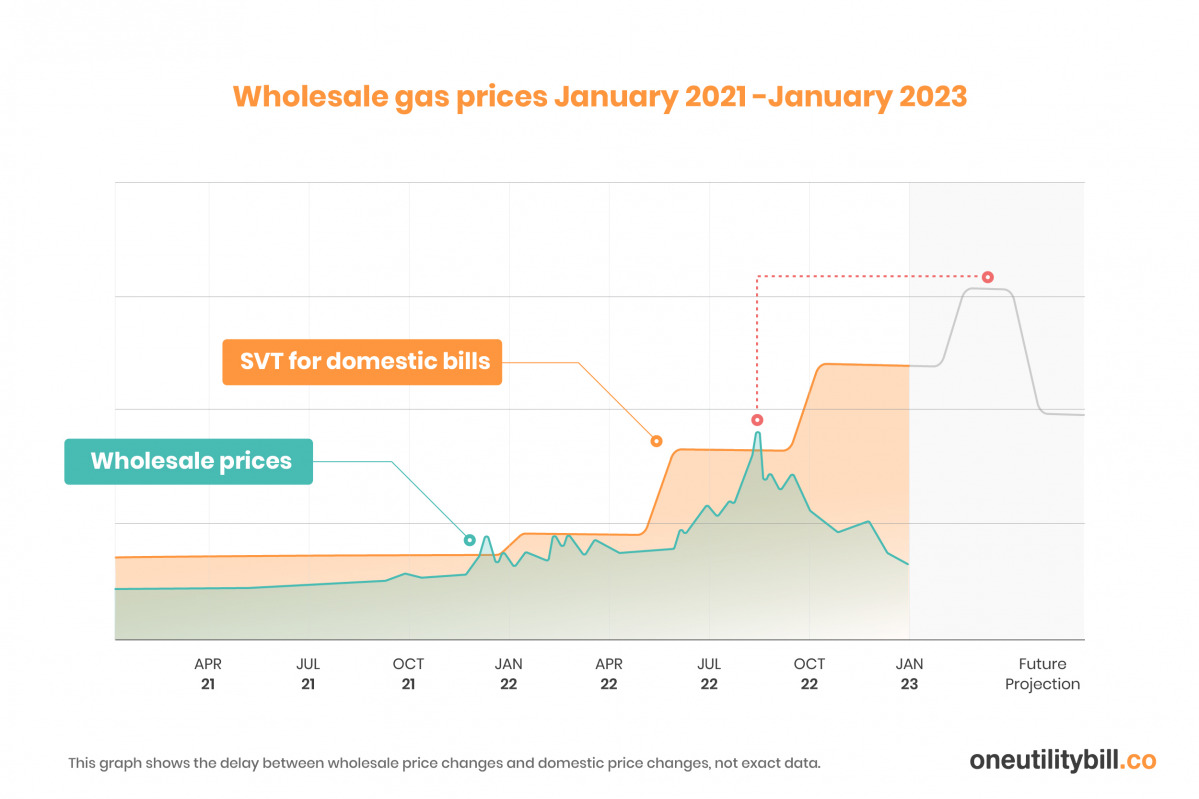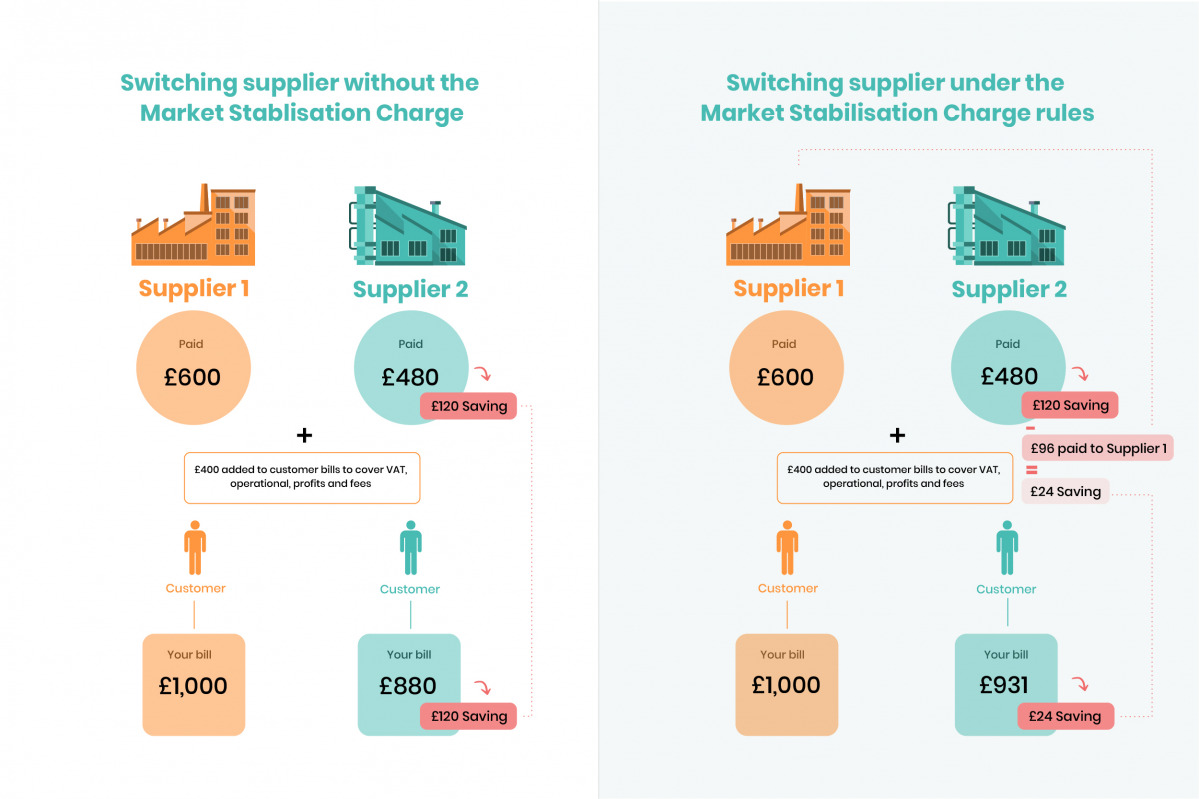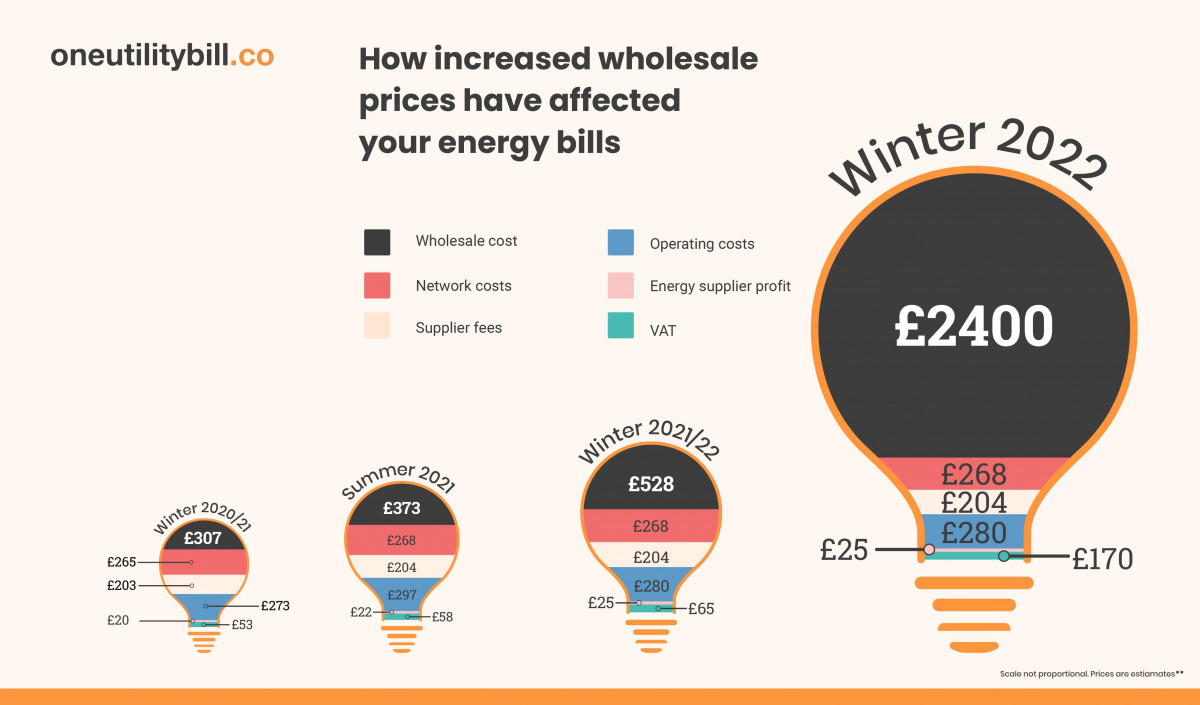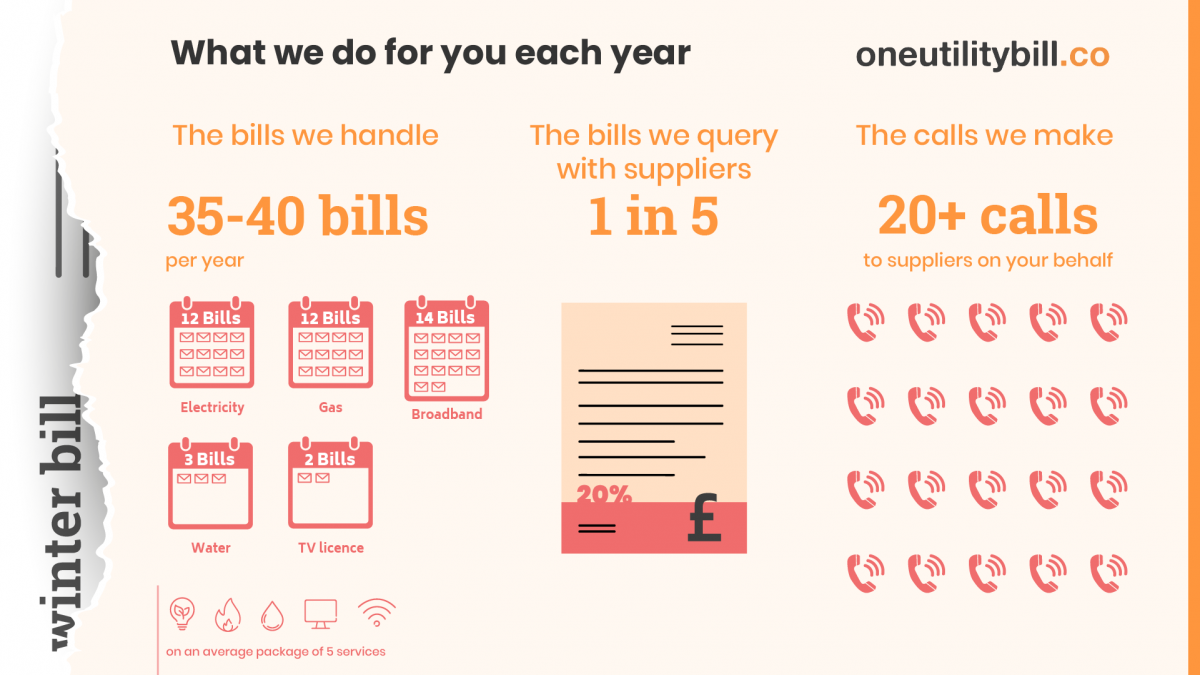Quick links:
- What caused the energy crisis
- Why did energy bills take so long to fall?
- How energy industry changes affect energy prices
- How energy pricing works
- When will energy bills go down?
- How your One Utility Bill package fits in
- Is there support available?
- Other energy bill advice and info
Energy prices increased dramatically throughout the energy crisis, and while things are more stable now, and the knock on effect for bills and other expenses has been huge. It's a complex issue with tons of contributing factors.
Everybody deserves to know what's happening to their finances and why, so let's cover the main points (and some things you might not be aware of).
One Utility Bill exists to make bills easier with easy bills packages, unlimited renewable energy and other good stuff.
A quick recap of key energy crisis facts right now:
-
Energy prices have evened out since the worst of the energy crisis, which peaked during 2021.
-
The government energy regulator, Ofgem, has moved to announcing a new energy price cap every three months.
-
Wholesale gas prices for energy are lower than during the peak of the crisis, but still higher than people paid before the energy crisis.
What caused the energy crisis?
The energy crisis was a global issue, with complex causes. Lots of factors impact energy prices and bills.
Here are some of the initial causes of the crisis:
- Lack of gas storage: In Winter 2021/22, gas storage across Europe was too low to meet demand. Lots of countries use gas stores to meet higher demand in Winter. In Winter '21, stored gas supplies couldn't meet demand after Russia reduced gas exports. Gas supplies from elsewhere became more expensive.
- Calm weather: Less wind meant less power from wind farms in 2021. More fossil fuels were burned to generate power, a more expensive option.
- Major power cable shutdown: A fire at one of the UK’s major power cables in France shut it down. Energy from other sources became more expensive.
- War in Ukraine: Many countries placed sanctions against Russia after its invasion of Ukraine. Less Russian gas meant many European countries had to find alternate sources, making them more expensive.
- The pandemic: Demand for energy fell at the beginning of the pandemic when everybody was at home in lockdown, but when restrictions were lifted, energy demand increased sharply. Adjusting energy supplies quickly isn't an easy process, so prices for energy went up.
All of these issues affected wholesale energy prices, i.e. how much it costs for energy suppliers to buy the energy they supply to you.
Suppliers pass increased costs onto consumers, but the way that most energy suppliers buy their energy means that the increase in costs to customers comes a few months after the increase for suppliers.
Why aren’t my energy bill prices falling as fast as wholesale energy prices?
Wholesale gas started getting cheaper in early 2023, which you can see in the graph below. A milder winter than expected reduced pressure on gas storage, which means energy companies paid less for energy.
.jpg?width=1200&height=800&name=Energy%20price%20wholesale%20graph%20(1).jpg)
This is good news, but the impact on bills wasn't immediate. Changes to wholesale prices take a little while to filter through to energy bills. Here's a rundown of why:
- Energy suppliers buy energy in advance to make sure they can meet demand. This is called hedging.
- In Jan 2023, most suppliers had already bought energy up until Summer 2023.
This approach means that there's always enough to meet customer demand so the supplier can stay in business.
- It also means that suppliers have to charge the price they paid for energy to stay in business, even if wholesale prices drop afterwards.
30+ energy suppliers went bust in 2021 because they didn't buy their power in advance and rising wholesale gas prices caught them off guard. When prices increased sharply, they had to buy energy at a price higher than their customers were paying for it and went under as result.
Here's the same graph as above with some of this extra detail:

And here's a more in-depth explanation of the wholesale energy prices situation.
Energy industry changes that affect prices
As well as the ways suppliers buy energy, Ofgem introduced new rules during the crisis to make sure companies don't go out of business when prices drop.
What was the Market Stabilisation Charge?
The Market Stabilisation Charge was a temporary measure in response to dramatic changes in energy prices to stabilise the energy market. It's regulated by Ofgem, and was super important despite not having the most imaginative name.
When wholesale energy costs fell 10% below the current guaranteed energy price, the charge would could into effect. This happened more often towards the end of 2023 as energy prices began to stabilise and switching between suppliers was easier.
The Market Stabilisation Charge was temporary. It began in April 2022 and ended on March 31st 2024.
- The charge is paid by your new energy supplier if you switch to them for a lower price. Your new supplier pays around 80% of the price difference to the old supplier as compensation for the lost company.
- This essentially means customers are charged for higher energy prices, even if their new supplier bought energy for less.
This isn't the most straightforward system, so here's an example.

In the image you can see an example scenario. FYI: The numbers here are illustrations of how the rules work, not real world figures.
-
Your old supplier, Supplier 1, hedged their energy supply and paid £600 for the gas and electricity for the length of your contract.
-
Supplier 2 didn't hedge and only paid £480 for the same amount of energy a few months later when wholesale prices were lower.
-
This is a saving of £120 or 20%.
-
If each supplier adds £400 to your bill to cover extra costs like VAT, operational and network costs, profits and fees your bill at this point would be:
-
Supplier 1: £1000
-
Supplier 2: £880
-
-
Under the Market Stabilisation Charge rules, Supplier 2 would need to pay Supplier 1 £51 if you switched to their service.
-
The new charge for Supplier 2's services would be £931, saving you £69 rather than the £120 that the supplier saved on energy.
Basically this charge makes offering cheaper energy tariffs an unappealing idea for energy suppliers, even if prices have come down. They’d need to pay money to other suppliers rather than continue to make money by keeping prices the same.
How energy bill pricing works
Energy bills aren't just made up of wholesale energy costs.
It costs money for suppliers to get energy to you, maintain the grid, pay their staff, and they add a profit margin on top. You also pay VAT on energy bills, which is included in there too.
Here's a breakdown of how energy bills were made up during the energy crisis. As you can see, wholesale costs make up the bulk of your bill costs.
These diagrams don't include the Market Stabilisation Charge, because that would only be added if you switch suppliers.
Here's a break down of energy bill costs and their increases between 2020 and 2022 at the peak of the energy crisis:
As you can see, wholesale energy costs make up most of bills ocst

When will energy bills go down to pre-energy crisis levels?
Energy bills have started to come down since the energy crisis, and any increases we see are usually a few per cent, rather than the huge spikes we saw during the energy crisis.
Cornwall Insights is a leading energy industry analyst, and predict that energy prices won't fall below energy crisis levels any time soon, but do not predict any huge increases either.
The energy price cap is updated every three months. You can check out our energy price cap blog for more details.
How your One Utility Bill package fits in
When you sign up with One Utility Bill, it becomes our job to manage bills for you. This includes a whole lot of work behind the scenes to deal with suppliers and find you the best deal possible:

It’s our job to manage bills for you. We’re the experts who deal with all your bill-related challenges and if you need support or have questions about your bills package, we're the ones to speak to.
Is there any other support available?
When it comes to other sources of support, that’s not our area, but here are some experts who could be a good place to start:
Other energy bill tips and tricks:
The Ultimate Guide to Easy Bills
Fixed energy tarrifs explained
Bills packages, the easiest way to split the bills
What type of energy user are you? Low, medium or high?
The Ultimate Meter Reading Guide
Get funding to improve your home's EPC rating
5 energy-saving myths debunked


